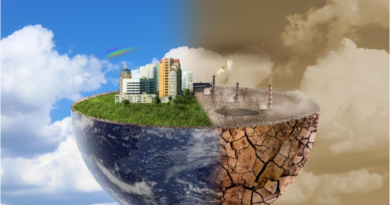Causes of Heavy Rainfall
When the skies open up and rain pours down in torrents, it can be both awe-inspiring and overwhelming. But what causes heavy rainfall? And what are the implications of this intense weather phenomenon? Delving into the realm of science, this article explores the intricacies behind heavy rainfall, shedding light on its causes and the far-reaching effects it has on our environment.
The science behind heavy rainfall is a fascinating blend of meteorology, atmospheric physics, and climatology. Understanding the intricate mechanisms that trigger these downpours can help us make sense of the often unpredictable and extreme weather events we experience.
From convection currents and atmospheric moisture to frontal systems and orographic lifting, a multitude of factors come into play to create conditions conducive to heavy rainfall. Exploring these causes will broaden our appreciation for the complex interplay of nature’s forces that give rise to these dramatic weather events.
Moreover, understanding the implications of heavy rainfall is crucial in areas prone to flooding and landslides, as well as for agriculture, water resource management, and urban planning. By comprehending the science behind heavy rainfall, we can better prepare for its consequences and work towards mitigating its impact on our lives and the environment.
So, let’s delve into the fascinating science behind heavy rainfall and unravel its secrets.
The water cycle and its role in heavy rainfall
At the heart of heavy rainfall lies the water cycle, a continuous process that circulates water between the Earth’s surface and the atmosphere. The cycle begins with evaporation, where water from oceans, lakes, and rivers turns into water vapor due to the sun’s heat. This water vapor then rises into the atmosphere, where it cools and condenses to form clouds.
As condensation continues, water droplets within the clouds merge and grow in size. Eventually, these droplets become too heavy to stay suspended and fall to the ground as precipitation. The intensity of the rainfall depends on various factors, including the amount of moisture in the air, the temperature, and the presence of lifting mechanisms.
Atmospheric conditions that contribute to heavy rainfall
Various atmospheric conditions come together to create the perfect environment for heavy rainfall. One crucial factor is atmospheric moisture. When warm air rises and cools, it can no longer hold as much moisture, leading to condensation and cloud formation. The more moisture present in the air, the greater the potential for heavy rainfall.
Another significant contributor is convection currents. These are vertical movements of air caused by temperature differences. When warm, moist air rises, it creates an updraft. As this air cools, it condenses and releases its moisture, resulting in heavy precipitation. Convection currents are often responsible for intense thunderstorms and localized heavy rainfall.
Additionally, frontal systems play a crucial role in heavy rainfall events. When air masses with different temperatures and moisture content collide, they form a boundary known as a front. Along these fronts, warm air is forced to rise, leading to the formation of clouds and heavy rainfall. Frontal systems are often responsible for prolonged periods of rain over large areas.
Climate change and its impact on heavy rainfall
Climate change has been observed to influence the frequency and intensity of heavy rainfall events. As the Earth’s climate warms, it alters atmospheric circulation patterns and increases the moisture-holding capacity of the air. This, in turn, contributes to an increased likelihood of heavy rainfall.
Warmer air can hold more moisture, leading to an increase in atmospheric water vapor. When this moisture is eventually released as rain, it can result in more intense downpours. Additionally, changes in weather patterns and the disruption of traditional rainfall patterns can also contribute to heavier rainfall events.
Effects of heavy rainfall on the environment and infrastructure
The effects of heavy rainfall on the environment and infrastructure can be significant. One of the most immediate impacts is the risk of flooding. When rainfall exceeds the capacity of the land to absorb it or the capacity of rivers and drainage systems to carry it away, flooding occurs. This can lead to property damage, displacement of populations, and loss of life.
Heavy rainfall can also trigger landslides, especially in areas with steep slopes and unstable soil. The excess water saturates the ground, reducing its stability and increasing the likelihood of landslides. These events can cause extensive damage to infrastructure, disrupt transportation, and pose a threat to human safety.
Furthermore, heavy rainfall can have long-term effects on ecosystems and biodiversity. It can affect the composition and nutrient levels of soil, impact vegetation growth, and alter the habitats of various species. The ecological consequences of heavy rainfall events can ripple through ecosystems, affecting everything from plants and animals to entire food chains.
Predicting and forecasting heavy rainfall events
Accurate prediction and forecasting of heavy rainfall events are essential for early warning systems and effective disaster management. Meteorologists and climatologists use a combination of observational data, computer models, and satellite technology to forecast these events.
Data on atmospheric conditions such as temperature, humidity, wind patterns, and air pressure are collected from weather stations and satellites. This data is then fed into computer models that simulate the behavior of the atmosphere and predict future weather patterns. By analyzing these models and historical data, meteorologists can provide forecasts that help communities prepare for heavy rainfall events.
Mitigation strategies for heavy rainfall
Mitigating the impact of heavy rainfall requires a multi-faceted approach that combines infrastructure development, land-use planning, and community preparedness. Implementing effective drainage systems, improving the capacity of rivers and canals, and constructing flood control structures can help manage excessive rainfall and mitigate flood risks.
Land-use planning plays a crucial role in minimizing the impact of heavy rainfall events. Identifying areas prone to flooding and landslides and implementing appropriate zoning regulations can help prevent the construction of infrastructure in high-risk areas. Additionally, promoting sustainable land management practices can improve the water-holding capacity of soils and reduce runoff.
Community preparedness is also vital in mitigating the impact of heavy rainfall. Educating communities on flood safety, developing evacuation plans, and establishing early warning systems can save lives and minimize property damage. By fostering a culture of resilience and preparedness, communities can better cope with the effects of heavy rainfall.
Case studies of heavy rainfall events around the world
To gain a deeper understanding of the diverse nature of heavy rainfall events, let’s explore some notable case studies from around the world.
1. Hurricane Harvey, United States – In 2017, Hurricane Harvey brought unprecedented rainfall to parts of Texas and Louisiana, causing catastrophic flooding. The storm dumped over 60 inches of rain in some areas, resulting in widespread devastation and economic losses.
2. Mumbai Monsoon, India – The monsoon season in Mumbai, India, often brings heavy rainfall, leading to frequent flooding. In 2005, a record-breaking rainfall event resulted in severe flooding, claiming hundreds of lives and causing extensive damage to infrastructure.
3. Typhoon Haiyan, Philippines – Typhoon Haiyan, one of the strongest tropical cyclones on record, struck the Philippines in 2013. It brought heavy rainfall, storm surges, and strong winds, causing widespread devastation and loss of life.
Future research and advancements in understanding heavy rainfall
As our understanding of heavy rainfall continues to evolve, ongoing research and advancements in technology hold the promise of improved forecasting and mitigation strategies. Scientists are constantly refining computer models, incorporating more accurate data, and developing novel techniques to better predict heavy rainfall events.
Advancements in remote sensing technologies, such as satellites and radar systems, provide valuable data on atmospheric conditions, moisture content, and rainfall intensity. These technologies enable scientists to monitor and analyze weather patterns in real-time, enhancing our ability to predict and respond to heavy rainfall events.
Conclusion
The science behind heavy rainfall is a complex and fascinating field that combines various disciplines to unravel the mysteries of intense precipitation. From the water cycle and atmospheric conditions to the impacts on the environment and infrastructure, heavy rainfall plays a significant role in shaping our world.
By understanding the causes and implications of heavy rainfall, we can better prepare for its effects and work towards mitigating its impact. Through ongoing research, technological advancements, and community-based initiatives, we can strive to build resilience and adapt to the challenges posed by heavy rainfall events. Let us continue to explore the science behind heavy rainfall and unlock its secrets for a safer and more sustainable future.




